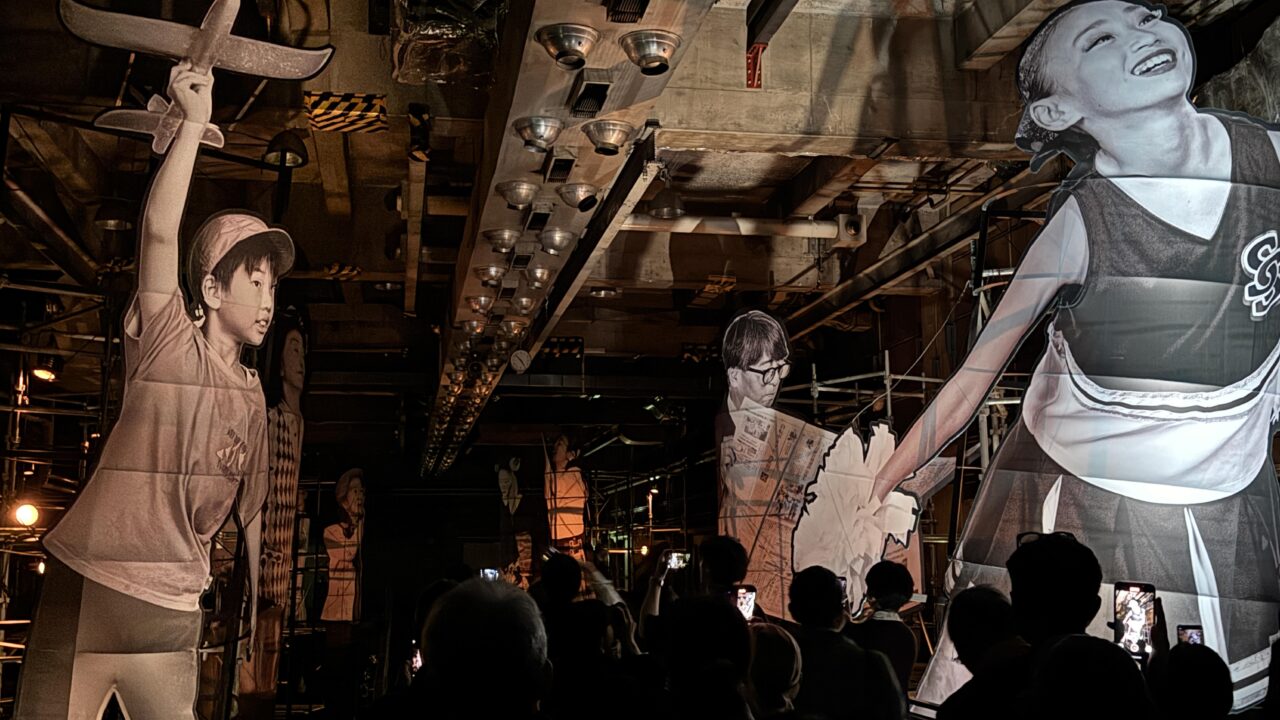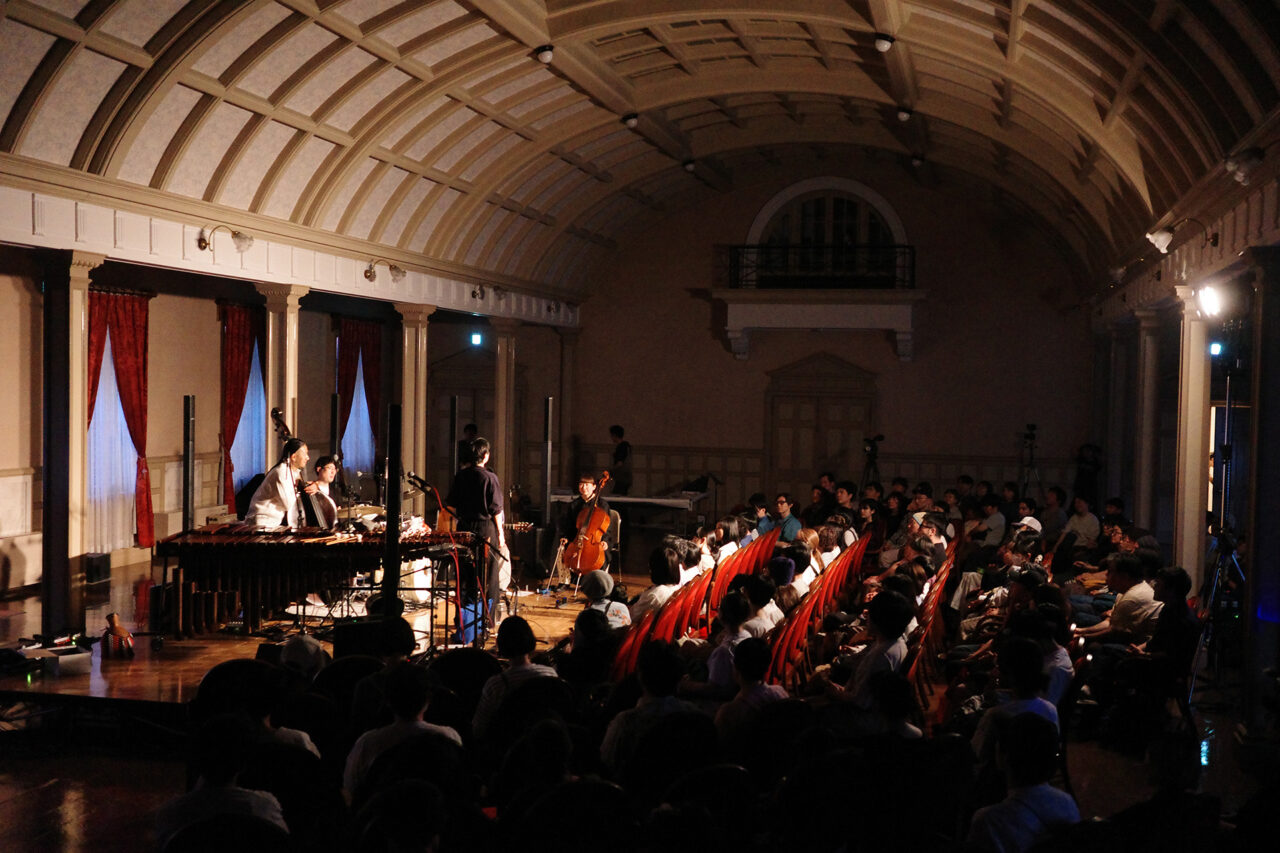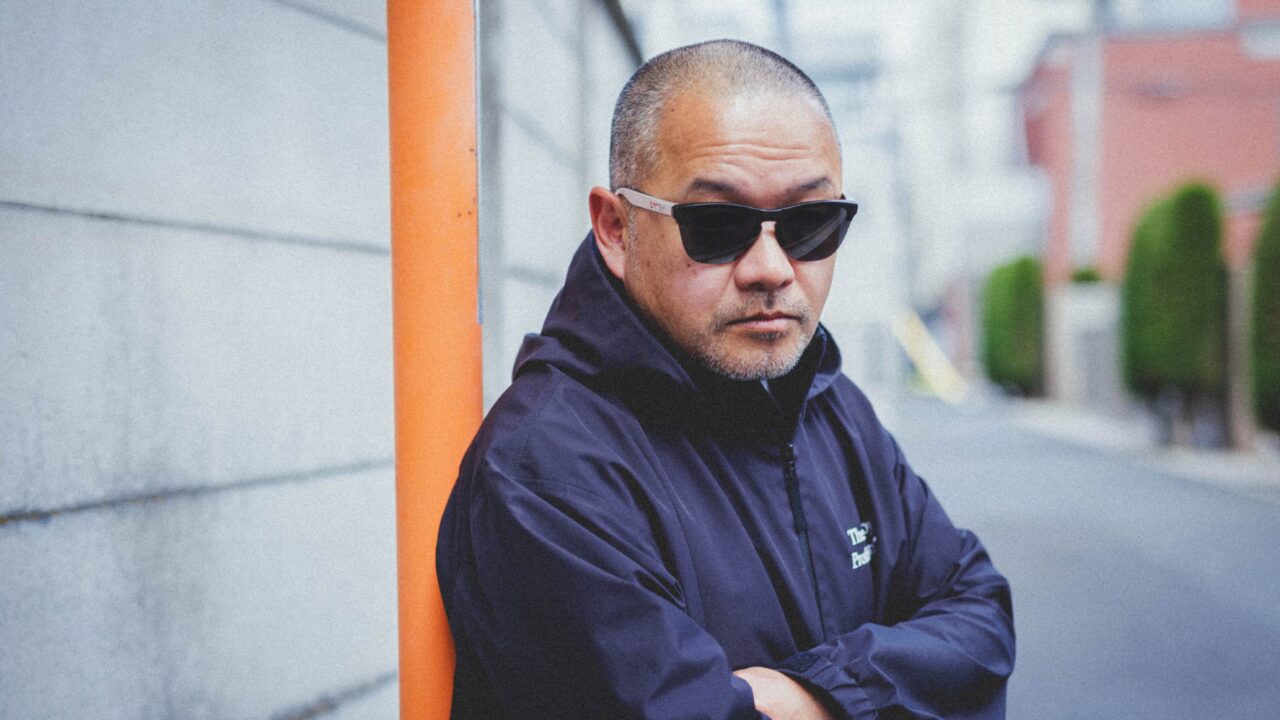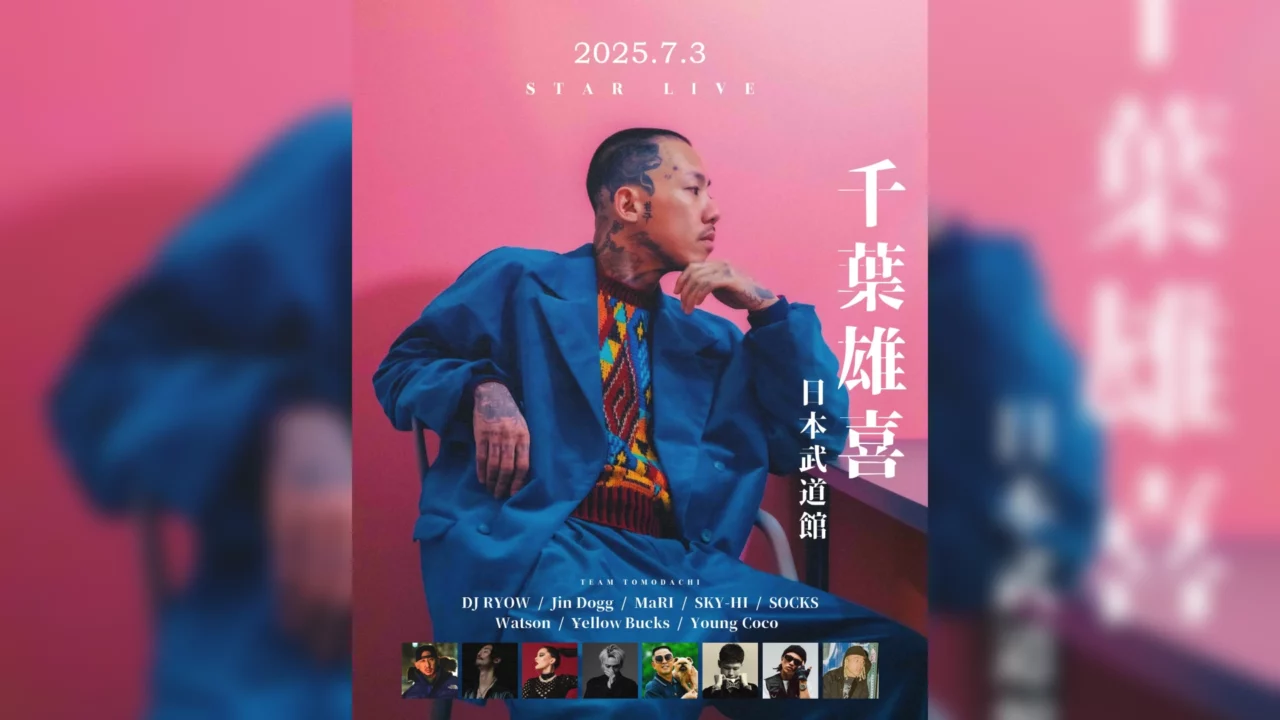Danko Iida’s solo exhibition, titled “Shunga Exhibition,” is scheduled to take place at Meguro, Tokyo’s Gallery “Tsukigime” from March 9th (Saturday) to 24th (Sunday).
Iida is widely recognized as the leader of the elusive street performance group Seppuku Pistols, consisting of over 20 traditional Japanese instrument players. Besides, he is known for his proficiency as a designer specializing in Japanese patterns and motifs. In the past, he had a strong inclination towards punk and was involved in designing the jacket and tour merchandise for BLANKEY JET CITY’s first video, “DOG FOOD,” in the 1990s. However, after returning from a roughly three-year stay in London in the 2000s, he has been exploring and embracing indigenous Japanese culture. He continues to lead a lifestyle characterized by always dressing casually.


This exhibition, his first solo show, features a series of Shunga paintings by Iida printed on Tosa Washi paper, as well as hand-painted one-of-a-kind works. The Tosa Washi is a special handmade paper made of hemp and paper mulberry by Hamada Washi in Kochi Prefecture, which has a long history dating back to the Heian period (794-1192).
Admission is free. An opening reception will be held on the first day, and Iida will be present on the second day. A lengthy exhibition statement by Iida is also available, explaining how he came to choose shunga as his theme.
Statement
First of all, I would like to express my sincere gratitude to all those involved in planning and hosting this event and to those who are expected to attend in the future.
I am Danko Iida, also known as the captain. It’s a joy that there are a few people who favor me, but I am entirely an unknown man. Yet, how did I, a completely unknown individual, end up having a “solo exhibition”? Is it a bug from a chaotic era? As if the world had buttoned up wrong, and I happened to be the extra button at the bottom, luckily fitting into the vacant hole at the top? Or was it just a moment when the surplus button fell unnoticed with a pop?
Throughout my modest creative endeavors, particularly in two-dimensional designs, many were created with the purpose of being used for something. For instance, designs rubbed onto clothing, characters, hand towel patterns, compositions for music-related jackets, and posters. Since these become “complete” only when assembled in the end, the “original drawings” or “materials” are naturally not yet formed and are not worth showing. It’s akin to fragments of footage from a music video without the music. Now, did I not create standalone pieces? Yes, I did, but presenting them was sufficient only within the “certain group” I belong to. This group is charming because it does not claim to be “artists” or “musicians.” Why is that important? Let’s talk about Japan before modern times. Before the era of labeling as “artists” or “musicians,” although there were likes and dislikes, there was a world where common people engaged in various activities without such titles. Farmers sang songs, played flutes, and these spontaneously spread to the public, mingling for a long time. Over a decade ago, in a late-night “Daidai Kagura” performance in a rural area of Tochigi, I was fascinated by the sight of elderly farmers playing drums with cigarettes in their mouths. If the audience jeered at the raspy flute, they would retort from the stage, an enchanting moment in that Kagura performance. In the same region, there are over a hundred “double-sided fusuma paintings” used as backgrounds for local Kabuki performances, remaining since the late Edo to Meiji periods. These fusuma paintings feature a mix of Kano school paintings and peasant art, delighting in the absence of a clear boundary between performers and the audience. Including the Western punk movement, such thunderbolts have shaped me. Therefore, even in the realm of creation, I feel that the titles “artist” and “musician” belong to different worlds. “After all, it’s just a hobby for amateurs,” such critiques cannot stop me or make me reflect.
Modern times were supposed to deny the Edo period, yet it is constantly sold as a selling point. Additionally, things called “traditions” and “cultures” were seemingly preserved in the form of preservation because they appeared to be disappearing, but originally, these “dentou” (traditions) would naturally evolve if they were alive. As for the evolution of ukiyo-e and shunga, there is a fusion with modern information and easy substitutions. However, someone like me is already saturated with information, and there is no room to absorb more redundant information. As mentioned by the traditional Japanese instrument group, “We are not playing, but being played by the traditional instruments,” it is true. What is my originality? This existential struggle is quite tiresome. The explosion of impulse is the essence of life. When moving without thinking, that moment when your previously unnoticed scent becomes fragrant. Loneliness can lead people astray, but impulse can lead them back. They are exactly the same. I am “being played” by ukiyo-e and shunga for this occasion. What’s delightful lately is that when there’s a request, I’m often told, “We talked about ~, but leave the rest to Danko-san.” Most of the time, titles like “artist” or “musician” feel like they belong to a different world in the realm of creation. “Ultimately, it’s just a hobby and a pastime,” and such critiques cannot hinder me or make me reflect.
So, the theme for this occasion is “shunga.” The client for this request was none other than the “previous shunga.” The “previous shunga” told me, “Submit shunga again.” It’s not about the amount of information but the amount of imagination that creates new “shunga.” The form of this painting is like a peeking window from here, but in reality, it completes by peering into our hearts on the other side. It’s a process where the viewer fills in the gaps. I have prepared a series of thirteen pieces titled “shunga.”
Danko
Danko Iida “Shunga”
Dates: March 9 (Sat) – March 24 (Sun), 2024 * Closed on Mondays and Tuesdays
Opening hours: 13:00 – 19:00 (Wed/Thu/Fri/Sat/Sun)
Admission : Free
Venue : Tsukigoku
Address : B1, 1-3-2 Chuo-cho, Meguro-ku, Tokyo 152-0001
HP : https://tsukigime.space / Instagram : @tsukigime .space
Organizer : Sasquatchfabrix. / yugyo inc.
Danko Iida
Danko Iida has been drawing since he was a toddler, and has made it his specialty. In his teens, he immersed himself in the punk movement, and in 1989, when Jamie Reed, famous for his artwork for the Sex Pistols, visited Japan, he received direct instruction and inspiration from him. In 1992, while working at a punk store in Harajuku, he was offered the opportunity to create the jacket, design, and artwork for Blankey Jet City’s first video. In early 2000, he moved to London for three years. He formed a unit with a Russian woman and infiltrated Central St. Martin’s College of Art. During his homeless period, he lived on the streets of Brick Lane, selling Sid Vicious’ ukiyoe paintings and improvised clothing. After returning to Japan, he worked in several occupations before training in the advertising industry. In 2011, after the Great East Japan Earthquake, he formed and captained “Seppuku Pistols,” a group that uses Japanese musical instruments, as he began to search for things and actions that were noticeably indigenous to Japan. Here, he dropped out of punk. In recent years, he has been asked for advice on life and love, lectures on philosophy, and interviews, and he is no longer sure who he is. It has been 11 years since he moved to Tochigi. His shop name is “Yakamashi,” and he is also known as “Captain.


























